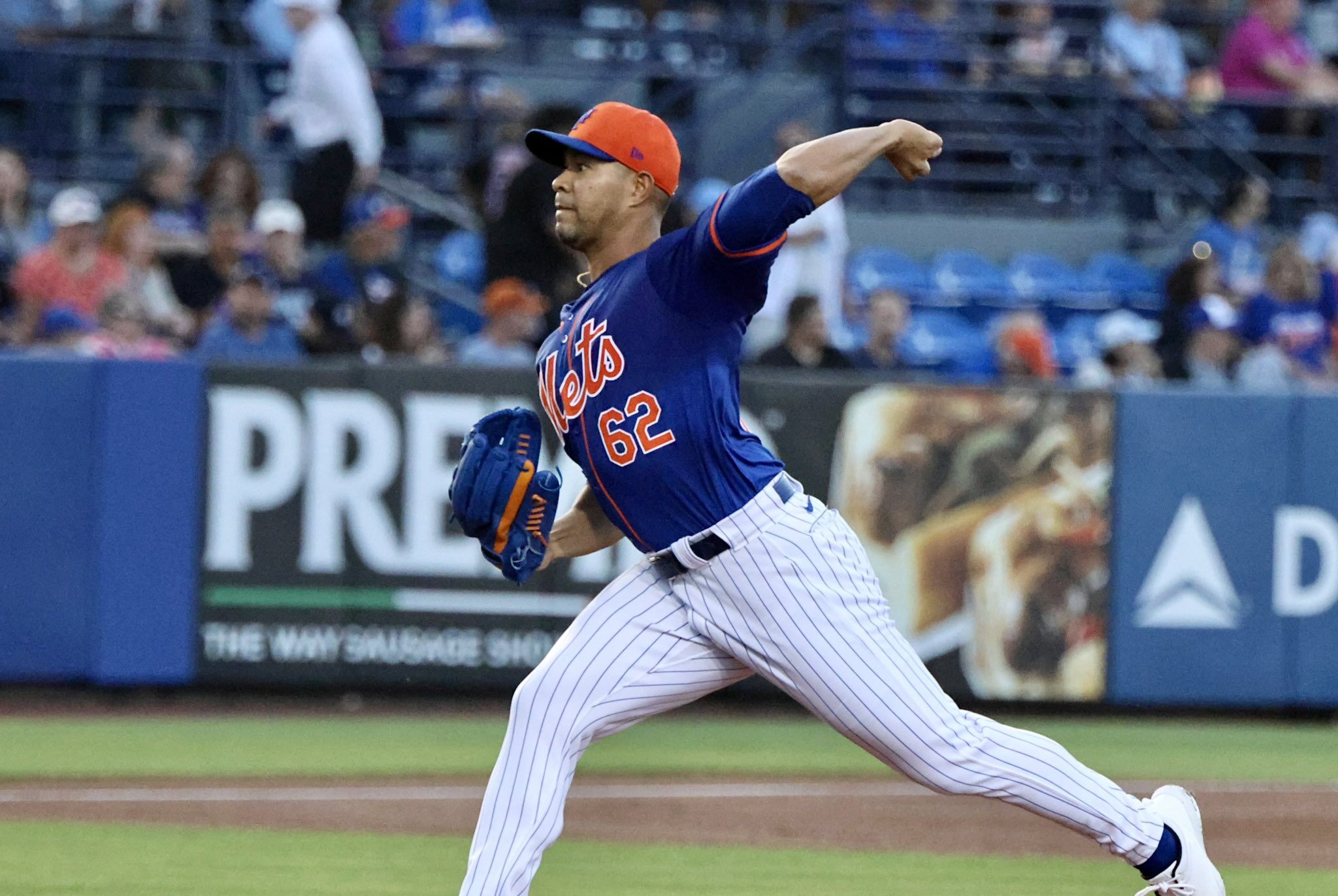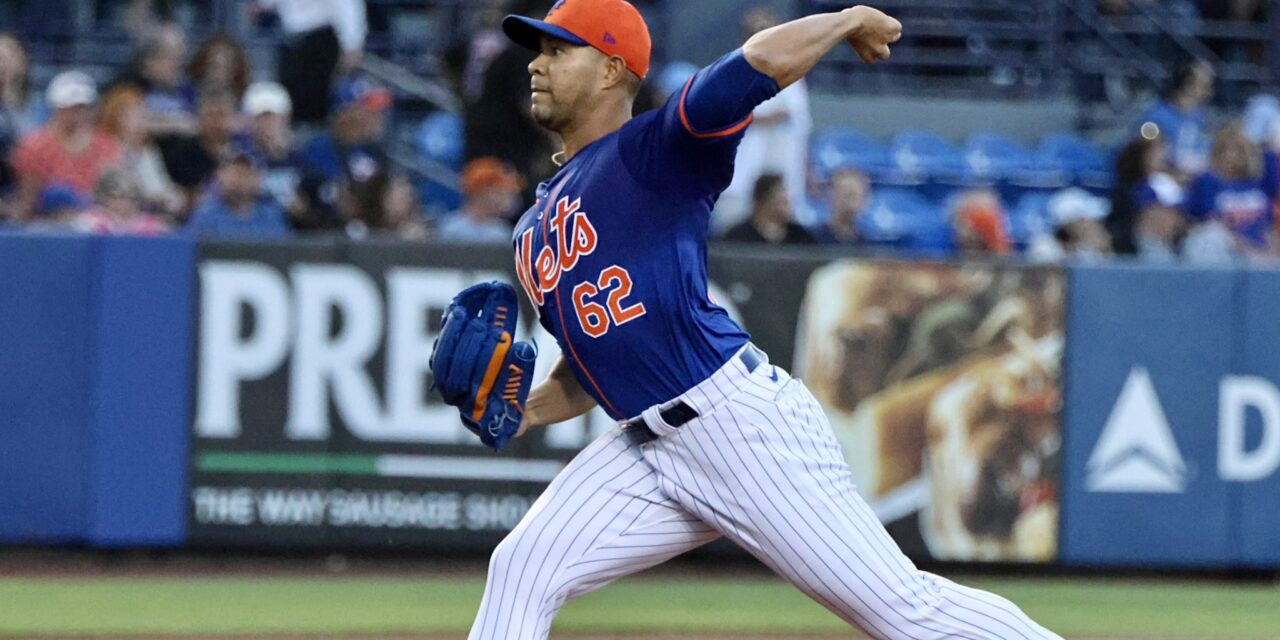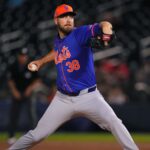In a rotation filled with unknowns, José Quintana’s importance has only been exacerbated with the news of Kodai Senga’s injury, which will keep him out for a sizable chunk of the opening portion of the 2024 season. With a potential Opening Day start and No. 1 spot in his future, the Mets need Quintana to bring his A game and tap into the success that he found in a limited sample size during the second half last season.
After a strong spring training outing on Thursday against the Washington Nationals, there are reasons to believe Quintana can act as the figurehead of the Mets’ rotation for the time being. In three innings of work, he struck out six hitters while ceding four hits and an unearned run on 54 pitches.

Photo by Ed Delany of Metsmerized
Quintana’s sinker, which became his primary pitch in 2023 with phenomenal results, was at peak form against Washington. He threw it 26 times, or 48% of the time, and generated a whiff percentage of 43% in addition to a called strike plus whiff rate (CSW) of 46%, both of which would be considered elite. He also averaged 91.3 MPH on the pitch, a tick up from his mean of 90.4 MPH last season.
All of those numbers have to be taken with a grain of salt considering the context, but it still bears watching. Opposing hitters batted just .198 with a .253 slugging percentage and .267 wOBA against Quintana’s sinker last season, and it appears as though he’s well on his way to making further improvements with it as well.
As his sinker continues to take precedence, Quintana’s four-seam fastball is falling out of favor in his arsenal. After throwing it at least 35.1% in every season from 2017 to 2022, that number dropped to 24.5% in 2023. It also produced diminished results as batters hit .385 with a .585 slugging percentage against it, and Quintana has taken precautions this spring to ensure that his newfound ineffectiveness with the pitch won’t come back to hurt him after throwing it just 9% of the time against the Nationals.
Another positive development from Quintana’s outing against was his command. After walking three hitters in 1 2/3 innings of work against the Houston Astros in his first start this spring, he didn’t allow a single free pass against Washington. Quintana has never dealt with control issues throughout his career, owning a career BB/9 rate of 2.64, so his performance against Houston didn’t sound any alarms, but it was encouraging to see him further round into form nonetheless.
In terms of the bigger picture this season, it’s easy to foresee a world in which Quintana thrives with what should be an improved defense behind him. Because he excels at limiting hard contact and typically induces ground balls at an above-average rate, Quintana may prove to be one of the biggest beneficiaries of the Mets’ focus on run prevention this offseason.
Quintana profiles as the safest bet among the available options in the Mets’ rotation entering the season, and for good reason. His long track record of accumulating positive results rather consistently, including in 2023, should quell some worries about the team’s pitching staff without Senga.















